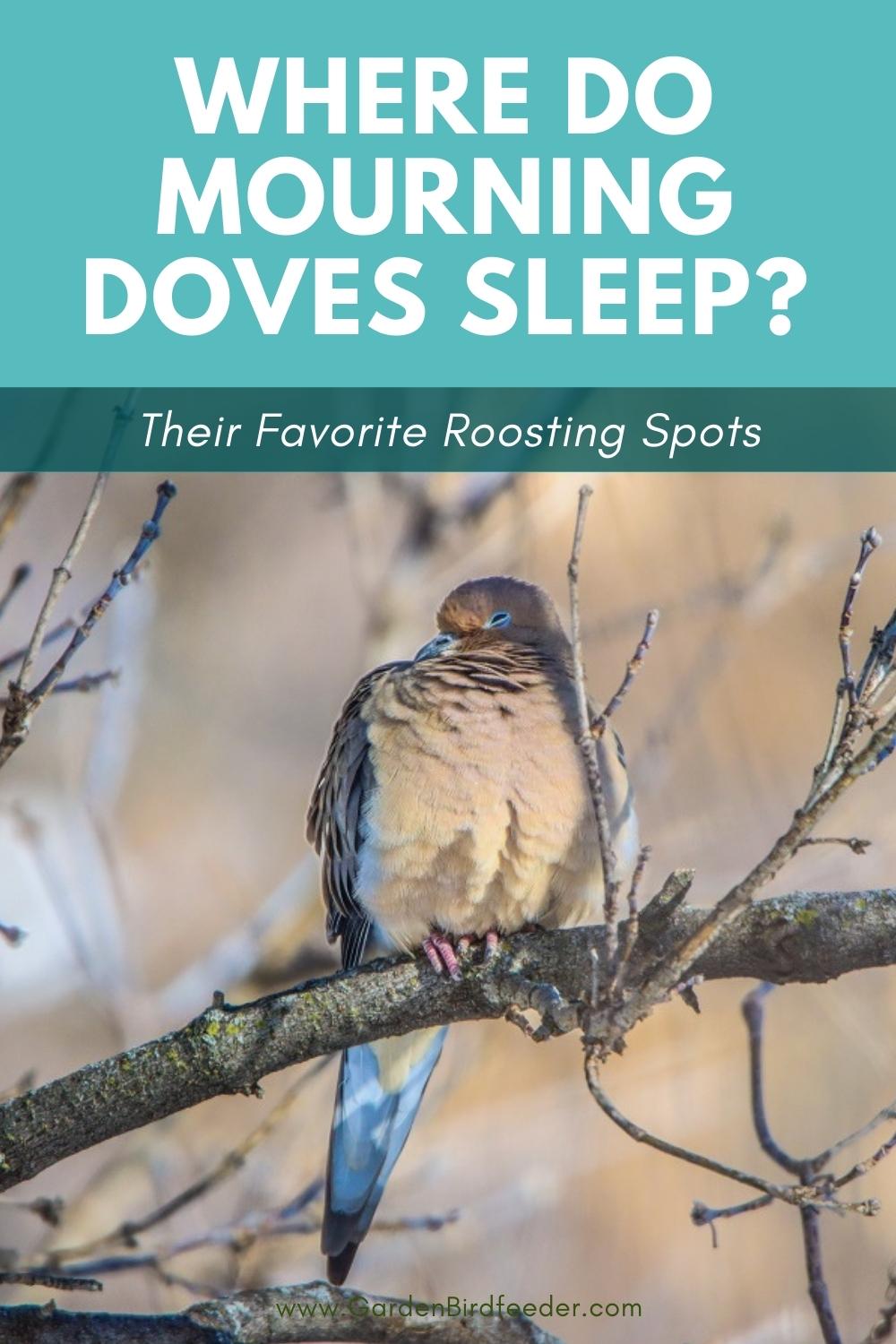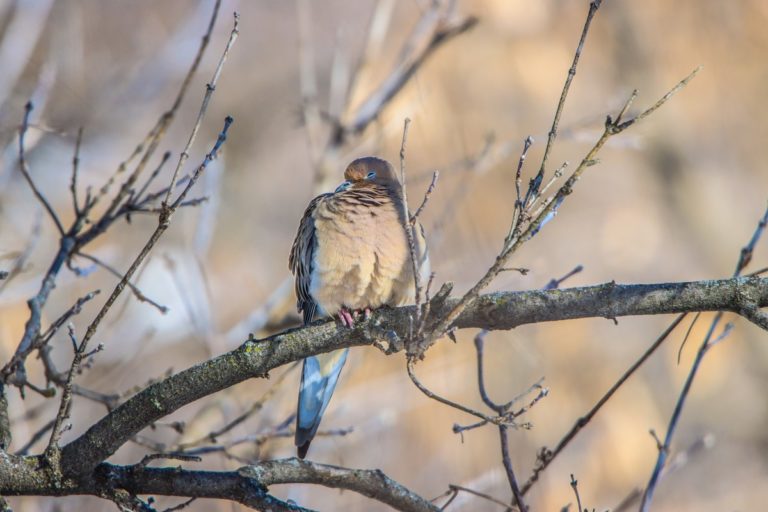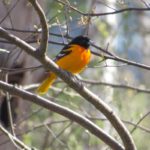Mourning doves sleep in trees most of the time but will occasionally sleep on the ground.
They are known as habitat generalists and can adapt to many areas, including farms, prairies, woodlands, and residential neighborhoods.
Learn more about how mourning doves choose the best location for sleeping and nesting. We’ll also talk about their nocturnal habits. Plus, some of their favorite areas for catching a little shut-eye.
How Mourning Doves Choose Their Roosting Area
Mourning Doves choose their roosting area for various reasons, including safety, warmth, light, food, water, and the availability of potential mates.
We’ll take a look at each of these factors in detail.
Safety from Predators
Morning doves will choose a roosting location to feel protected from predators at night. When sleeping, birds are at their most vulnerable, so safety is at the top of the list.
Trees provide good cover, which is why it is a favorite sleeping and nesting area. Sleeping on the end of a tree branch allows birds to feel vibrations of approaching enemies, while thick foliage keeps owls away.
Roosting inside or on a human-built structure is another form of protection against predators.
Mourning Doves Predators
Since mourning doves are ground-feeding birds, they are often hunted and caught by predators.
From the sky, predators of mourning doves include hawks, owls, eagles, falcons, grackles, and crows.
On the ground, raccoons, opossums, snakes, and even our household cats will feed on doves or hunt their eggs.
Why Do Mourning Doves Sit on The Ground?
You will often see morning doves sitting or roosting on the ground near their nesting areas. They may be resting, looking for food, keeping an eye out for predators, or watching for their mates.
Morning doves often roost on the ground near long grasses, at the base of crops, or by the meadow edges. However, if a predator comes too close, they will quickly take flight up and out of harm’s way.
Availability of Food
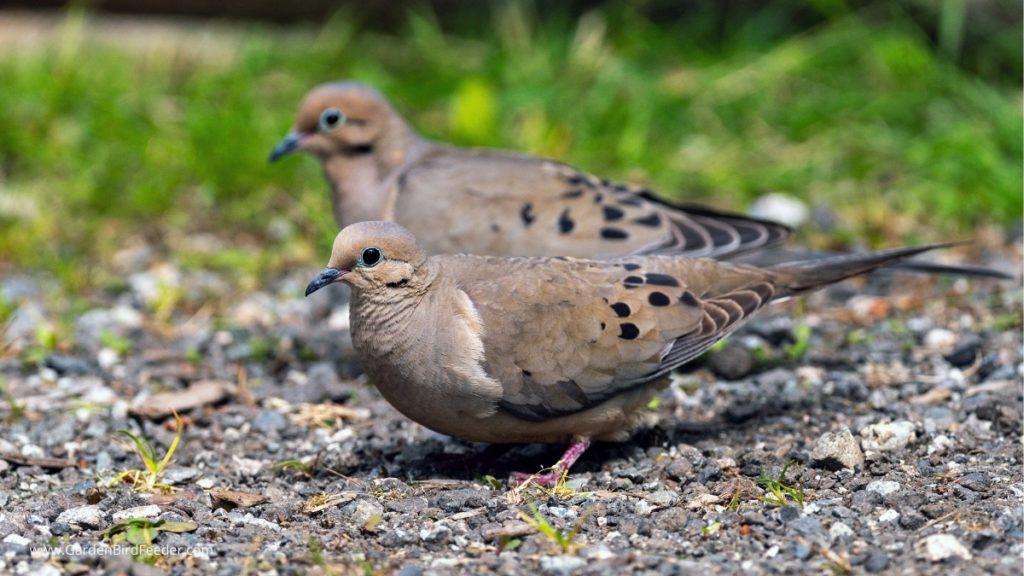
Most of the time, mourning doves will feed close to nesting and roosting areas. But they are very mobile and will travel up to 20 miles to feed.
The primary source of a mourning dove’s diet will come from seeds. However, they will also eat agricultural crops such as corn, wheat, barley, oats, and some plants.
Doves will choose a habitat with abundant food sources in open areas where they can graze while keeping an eye out for predators. Prairies, farms, the edges of woodlands, and residential areas all make a suitable habitat for the morning dove.
Protection from The Weather
Doves are not fond of colder weather. So, roosting is usually done in a warm place where the birds can be safe from the cold. —A dove will choose a sheltered area where they are protected from the wind and marching elements.
During colder days, mourning doves will also rise later in the day and return to their roosts later in the evening. It is thought that since they cannot retain heat as easily as some other birds, they need to forage for longer periods when it is cold to maintain their body heat.
In the coldest climates, doves will migrate south for the winter migration, returning in the spring to breed.
Common Roosting Locations
Mourning doves roost in the branches of deciduous and coniferous trees, like pine and spruce. Bushes, shrubs, and vines also make for good roosting locations.
They also sometimes roost on parts of manmade structures, especially in the absence of natural locations. You will often see morning doves on power lines, building ledges, and even on chimneys.
Around residential homes, you may find morning doves nesting in the eves of your house or even in a potted plant.
They regularly roost on farmlands, often right by rows of trees and shrubs that guard fields against aggressive breezes.
If you want to attract more morning doves to your yard, you can construct a dove nesting house and hang it in a location protected from wind and weather.
Morning Dove Sleeping Habits
When a mourning dove sleeps, he will bring his head down, resting it between his shoulders for warmth. They do not tuck their heads underneath their feathers like other bird species.
When the mating and nesting seasons come, the male and female take turns sitting on the eggs or young The female sits from evening until morning, the male takes the day shift.
Do Mourning Doves Sleep in Groups?
Mourning doves are particularly social birds and often spend time with other doves. Doves mate for life will often be seen sleeping in pairs or small family groups.
Nesting vs. Roosting – Do Mourning Doves Sleep In Their Nest?
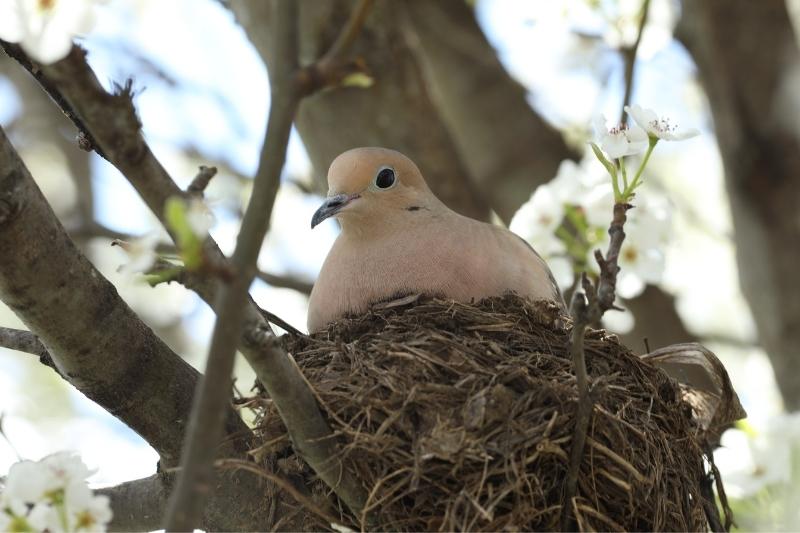
Doves don’t sleep in their nests. Nests are constructed for laying eggs and raising their young.
Roosting is the act of settling down to sleep or rest. And while birds hardly ever sleep in their nests if they have laid eggs, they will always be nearby.
Where Do Mourning Doves Spend Daytime?
The daytime hours are primarily spent foraging for food. Doves walk their habitats, pecking the ground looking for seed.
Doves will also sun themselves for up to 20 minutes at a time. They will lean over, stretching out a single wing to maximize exposure. Sunning is done on a broad tree limb or the ground. This behavior helps warm their bodies and exposes parasites to the sun and air.
Summary
Mourning Doves sleep in a variety of locations, from tree branches to telephone wires. They look for areas that provide shelter from the weather, safety from predators, and a source of nearby food.
If you want to attract more morning doves to your backyard, consider putting out a mourning dove feeder or nesting house. As long as they feel safe in your backyard and have an open area to forage and feed, they will likely move right in.
Like it? Pin It!
